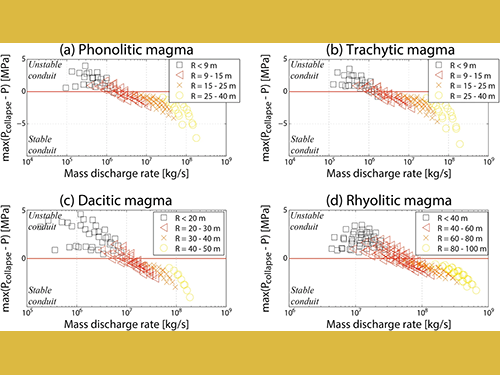Conduit stability effects on intensity and steadiness of explosive eruptions

Aravena Á., R. Cioni, M. de’Michieli Vitturi, A. Neri (2018).
Scientific reports, Nature Publishing Group, 8/4125, 2045-2322, doi:10.1038/s41598-018-22539-8.
https://doi.org/10.1038/s41598-018-22539-8
Abstract
Conduit geometry affects magma ascent dynamics and, consequently, the style and evolution of volcanic eruptions. However, despite geological evidences support the occurrence of conduit widening during most volcanic eruptions, the factors controlling conduit enlargement are still unclear, and the effects of syn-eruptive variations of conduit geometry have not been investigated in depth yet. Based on numerical modeling and the application of appropriate stability criteria, we found out a strong relationship between magma rheology and conduit stability, with significant effects on eruptive dynamics. Indeed, in order to be stable, conduits feeding dacitic/rhyolitic eruptions need larger diameters respect to their phonolitic/trachytic counterparts, resulting in the higher eruption rates commonly observed in dacitic/rhyolitic explosive events. Thus, in addition to magma source conditions and viscosity-dependent efficiency for outgassing, we suggest that typical eruption rates for different magma types are also controlled by conduit stability. Results are consistent with a compilation of volcanological data and selected case studies. As stability conditions are not uniform along the conduit, widening is expected to vary in depth, and three axisymmetric geometries with depth-dependent radii were investigated. They are able to produce major modifications in eruptive parameters, suggesting that eruptive dynamics is influenced by syn-eruptive changes in conduit geometry.


Devi effettuare l'accesso per postare un commento.